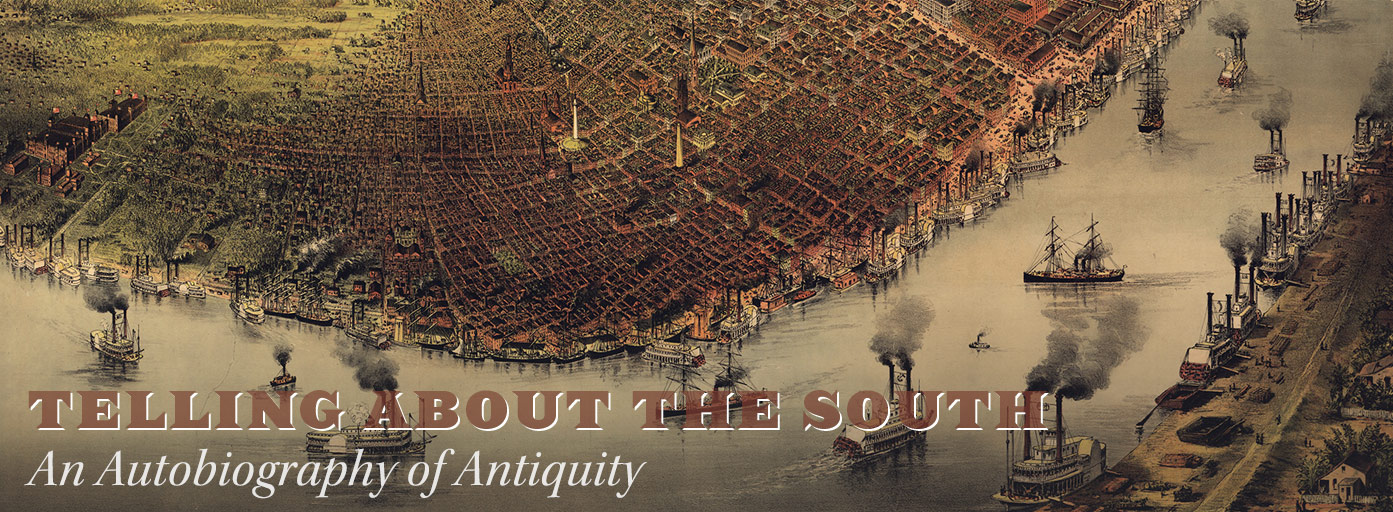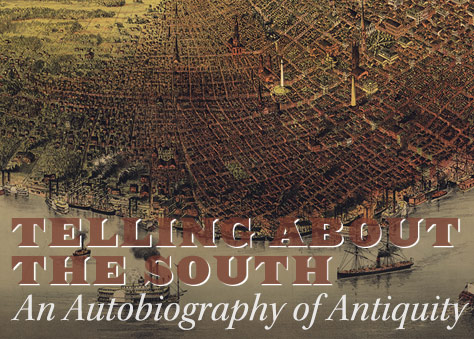It was 1988. Winter semester of my sophomore year at the University of North Carolina had just started, and I had been lucky enough to get into a junior-year course on the history of the Old South. I had never heard a Mississippian speak until Professor Peter Walker went through the usual formalities that begin a course. He then drew a map of Mississippi on the blackboard, which he dotted with X’s that marked all kinds of places, a few of which I recognized. At first I figured those places had to be important, but then I realized that this might have been an exercise in driving home just how ignorant we all really were—at least on the subject of where small towns in Mississippi are.
Stepping back to the lectern he read to us from two books to amplify the confusion we all must have felt after watching him draw that map of Mississippi covered all over with the little X’s that meant nothing to us but clearly a lot to him. The first scripture invoked a bawdy description of a woman’s bosom from one of George Washington Harris’s “Sut Lovingood” stories that passed for popular published entertainment in the early nineteenth-century South. To this day the juxtaposition of the words teacakes and rosebuds lingers in my mind. It was the bawdiest thing I had ever heard read aloud in my life. But it didn’t turn my life one way or another.
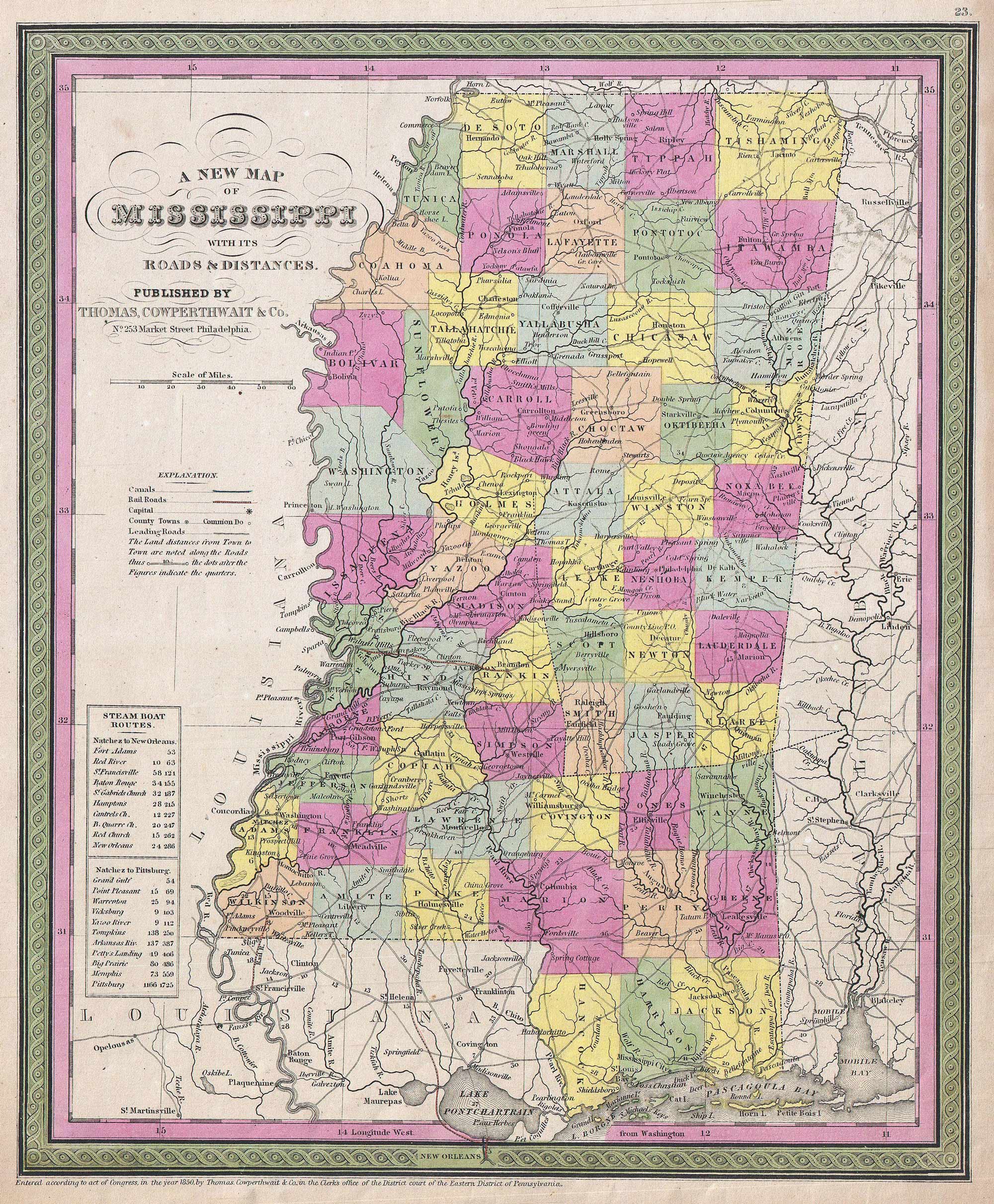
The next thing he read did.
If you have not read William Faulkner’s Absalom, Absalom! it begins with Colonel Thomas Sutpen conjuring a plantation out of a hundred square miles of land he had gotten from the Chickasaws and out of the labor he had extracted from the gnarled limbs of the enslaved men he had brought with him from Haiti to Mississippi. The book ends with the disappearance of Sutpen’s great-grandson Jim Bond, the bearer of black blood spilled in the cane fields of Haiti and white blood expelled in what might have been a rape, but we really do not know. Remember him. Jim Bond. “Whereabouts,” the book says, “unknown.”1
Professor Walker opened to the scene where Quentin Compson, the novel’s protagonist, sits in his cold, dark Harvard dorm room while his Canadian roommate, Shreve, interrogates him about Sutpen’s story and Compson’s own life in Mississippi. Then an italic voice from somewhere beyond implores Compson: “Tell about the South. What’s it like there. What do they do there. Why do they live there. Why do they live at all.”2
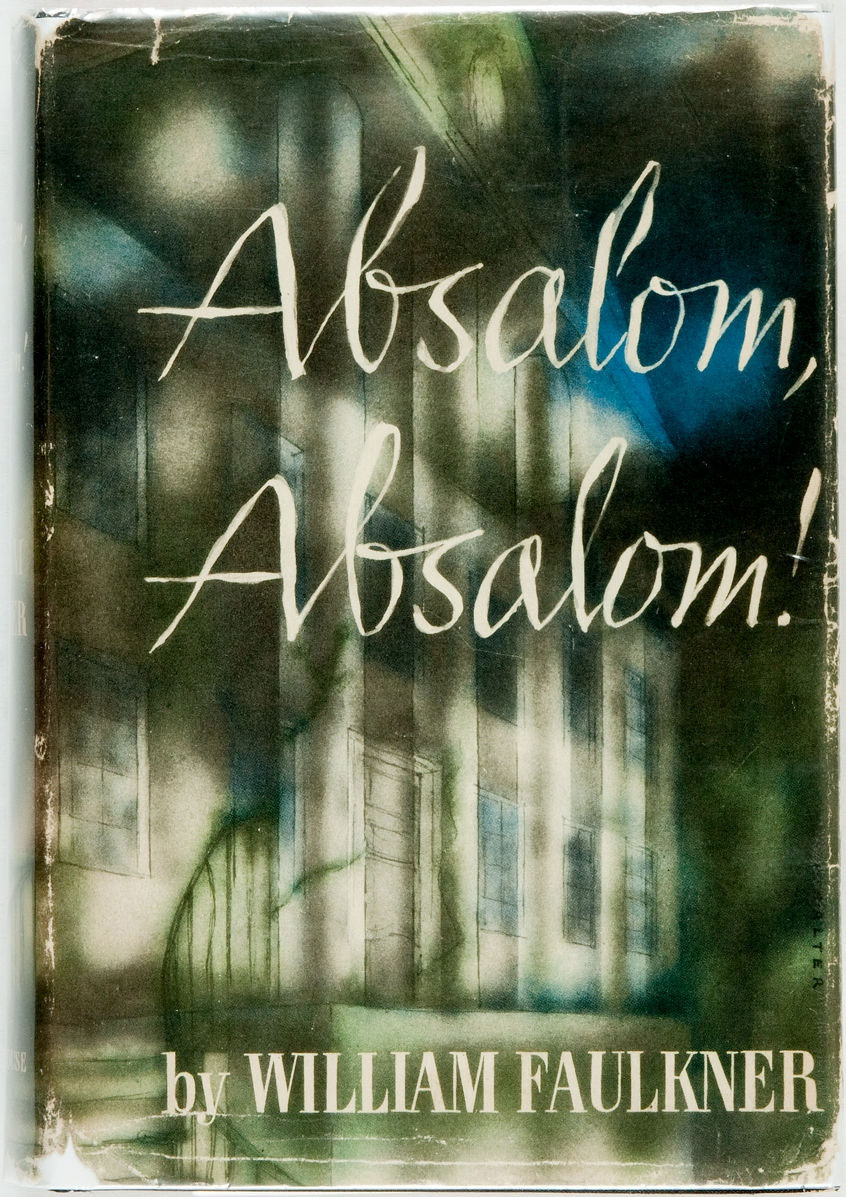
Time’s passing has changed my notion of what the South was or is. Back then I was interested in the plain folk, those nonslaveholding farmers of which my own family had been born, but that was really just a story, too, because the branches of my family tree also included town-dwelling professionals in west Tennessee, Whigs most likely, a couple of slaveholders who fought in blue for eastern Tennessee, and a grandmother’s line that ran through the Green Mountain State down through Connecticut and on into Massachusetts Bay. In the course of my young research on southern yeomen I kept encountering these people they called, and we still call, “Indians.” A few years before the rightness or wrongness of slavery became the dominant question of the day, I learned, the South’s politicians and voters were preoccupied with what was then called the “Indian question” and argued over what to do with people variously called Cherokees, animals, Choctaws, savages, Chickasaws, wretches, Seminoles, drunks, Creeks, and doomed.
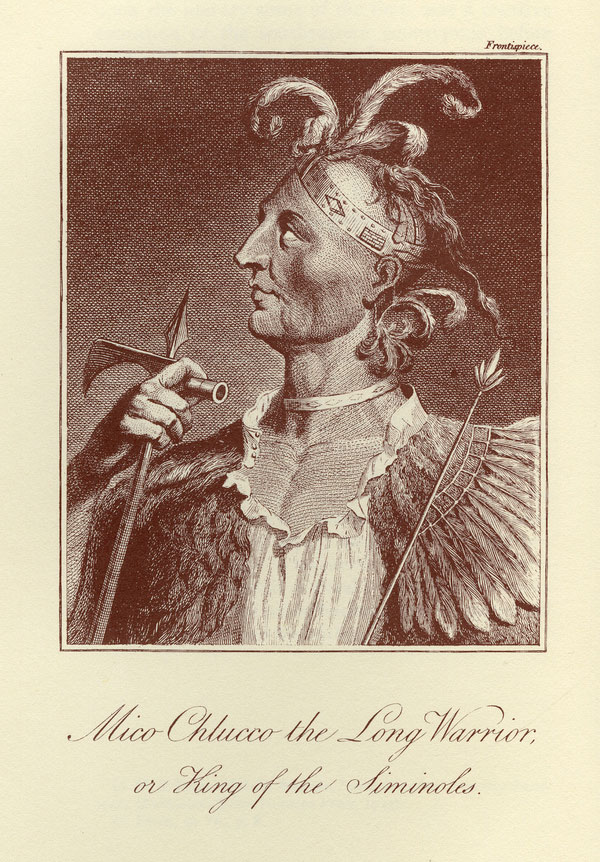
Some years after that winter day, I packed up and immigrated to Canada, which caused me to gradually change the mental image of that frozen Harvard dorm room that I had built and peopled in my mind. Sometimes you will see a Confederate battle flag up here for reasons hard to fathom. Barbecue is any meat cooked on a gas grill. And the ACC is the Air Canada Centre where a hardwood court floats atop a thick bed of ice. It cuts other ways too. Just the other day I had to return to a store to inquire as to whether or not I might have left my tuque on the counter. It had not occurred to me that I would have to say that word out loud until I got to the counter. I’d said it to my kids before but never out in public, never to strangers. But no one laughed at me when I did. The clerk just said, “Oh yes, here it is.” Maybe Shreve put it better when he tried to explain Canada to Quentin Compson: “We don’t live among defeated grandfathers and freed slaves . . . and bullets in the dining room table and such.”3
No, we don’t. But that “we,” for me, is sometimes still a “they.” Nevertheless, we/you/they do have a different way of thinking about the past and the people who populate it. People don’t really use the word “Indian” here. Like the word “negro” it just belongs to a time and a place to which no one wants to belong anymore. Instead, it is “First Peoples” or “First Nations.” And rather than being movie extras who continually receded ahead of an ever-expanding western frontier, they are considered one of Canada’s founding peoples. Such pride of place in the nation’s official historical consciousness, of course, does not really square with life as it is lived in the cities and on the reserves, but it is a start in reimagining our past.
It is also the starting point for my reconsideration of southern history. I always thought I would be Quentin, but it turns out I am Shreve, I guess, or maybe I am both. Really, though, I am neither. Just me, because, as we age, the things we once needed to hold onto to make our way through life become redundant at that point when we have encountered enough to let us know that we can just be ourselves and that that is enough. So there’s no more Shreve’s side of the story nor Quentin’s. Just mine. But I still want to tell about the South, just a South few people even know how to conceive and how this ancient place ought to matter to us today because we tend, I think, to neglect the fact that those of us who are here now stand in a long and often difficult line of habitation that reaches back thousands and thousands of years.
The South’s antiquity is here whether we want it or not. Our predicament is to decide whether or not we want to allow it to be here. I’d almost say it is a given, but to be given takes a permission we don’t know enough to grant. To leave this past unseen and unstated, however, is to accept the kind of amputated humanity we have been dealt by what we imagine to be a noble, if fraught, past. In reality, that past is just a story of theft. Legitimacy can’t be found nor can it be contrived. It can only be earned, and I think we need to understand that what happened at Jamestown, and Stono, and Cowpens, and Appomattox, and Selma are in some ways just so many quick breaths taken in a very long life. What I want is to find a kind of slow-motion history, a perspective of time that is so long and so broad that catastrophes and great events become mere ticks of the second hand that can hardly even be heard when sought out against an ageless backdrop of tectonic movements, of endless ocean lappings, and of the kind of quiet you can find in a forest that is only deepened rather than broken by the sound of a squirrel rustling through the leaves.
How many zeros do you have to put after the integer one to yield a number of years that you might think is a long time? For a historian of the South oftentimes just one zero will suffice. For a geologist it might take six or seven. I’ll ask you for three zeros to go back a few thousand years, but to do so I want to also stay in today so that you can feel, as well as hear, what I have to tell. I want what I have to say to be inextricable from your real life so you will find it difficult to refuse it, so that you can tell your friends and family how if we look hard enough at the world around us we can find our antiquity as, if not southerners, at least as North Americans. And how questions don’t necessarily have to be answered; they just have to be told. But will they believe you if you say that we can discover our antiquity in a supersized Coke or in a Chicken McNugget, or in the devastation Hurricane Katrina wrought, or in our collective insistence that Barack Obama is the first black president? They will if you will, so now it’s all up to you. All I’m doing is telling. And while such examples might seem at first glance to bear no relation whatsoever to each other, as we push through them and explore their distinct trajectories through time, we may find that their origins in our common ancient past expose for our consideration our own complicity in the great colonial project that is the South today. Only when we try to understand how our usurpations have grafted our lives onto much more ancient rootstock can we begin to resituate how we live and how we think about how we live.4
Let’s start with McDonald’s and McNuggets because to talk about them is to tell about corn, and corn is a starting point for life in this hemisphere. But to call it corn is too familiar, too much a part of your family. Lots of people pick on first peoples for being inauthentic because they drive cars, watch TV, speak English, or fish with graphite rods, as if somehow they can only be who they were instead of who they are because we just won’t concede to them life in a present tense. But for those of us who can’t claim membership on a national roll or a mother’s mother’s mother who was a Panther or a Wind or a Bear, we are immune to such charges—whether or not we consume corn or chocolate or tomatoes or tobacco. Such things are somehow ours, fully sprung into our lives without ever being inherited from the people who made them, and not at all entangled in questions of our own authenticity, whatever that may mean.
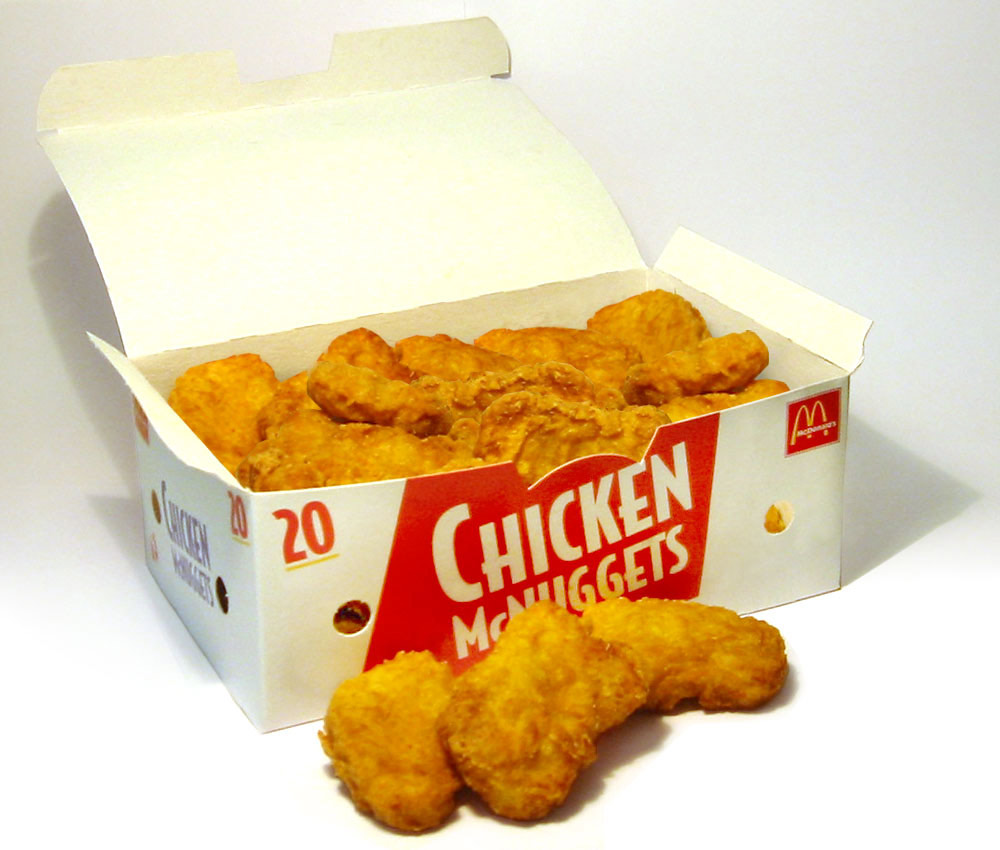
When we eat “corn” we eat something snared by a catchall English word that once stood for wheat and every other grain grown in the British Isles. Maize is a better word because it distances. It makes the object less approachable, more self-standing. Let’s go a little further and call maize drops of Selu’s blood, because Selu, the original Cherokee mother, gave birth to corn when her sons shed her blood, and wherever a drop fell a maize plant grew. Now imagine going to a movie and asking for a large bucket of Selu’s blood, even with butter, and you might feel just how alien what we call corn can be if we do not refuse its antiquity and its origins. For simplicity’s sake, though, why don’t we just call it maize.5
The plant has a past because it is not just a thing. It is alive and it has evolved in partnership with various societies in the Americas because it needs people as much as people need it. Left to its own devices its seeds mold on the ears, so it takes people to pick and husk the ears, shell the seeds, store them away where they can dry away from the mice, and plant them anew to reproduce a plant that gives an enormous number of calories relative to the time and effort necessary to cultivate it.6 Such power sparked the rise and fall of some of the South’s largest and most enduring societies. From the Mississippi bottomlands that sustained the maize that fed the great city of Cahokia, which at its peak in the eleventh century was home to between 10,000 and 15,000 souls, to places like Moundville, which may have had 1,000 inhabitants scattered along the plain of the Black Warrior River, to the pueblos of present-day Arizona and New Mexico, to the sites of Wendat and Haudenosaunee towns in present-day Ontario, Quebec, and New York, maize underwrote one of the great ages of the Americas. But as stunning as such societies can seem in museum dioramas and in artists’ reconstructions, the underside of the age of maize was and is ugly because—let there be no mistake about this—we remain today fixed squarely in the Age of Maize.7

If you are an archaeologist, you can find evidence of maize in ancient southern societies in one of two ways. You might find a few desiccated kernels or a bit of charred cob in the ground and then your work is done. If not, then you look at the bones of the people whose repose you ended when you opened their graves, and if you find a skull and in this skull you find teeth and on those teeth you find an average of two cavities per person then you have found people who ate maize. You will also find maize’s fingerprints all over their skeletons, lesions on the long bones of the arms and legs and pockmarked skulls that are the signs of the iron-deficiency anemia that set in when mothers weaned their toddlers off the breast and onto the ear. Generally speaking, southern populations grew because of the maize’s bounty, but they were less healthy and had, in some places, shorter life expectancies than their hunting and gathering forebears had ever known.8
Hernando de Soto’s bloody invasion of the South in 1539 triggered the collapse of several great maize societies over the following two centuries, but maize lived on and found new people to heap the mounds in which it grew best, to pick its ears, and to shell, and to plant its seeds. For example, during his travels in the 1770s, naturalist William Bartram read the remnants of the ancient landscape in the scores of small humps and ridges he saw in the vicinity of Pensacola, which revealed where the first Spanish farmers, or more likely their new wives, had planted their maize. His reconnaissance around Mobile Bay likewise revealed that early French farmers too had adopted the telltale mounding practices of maize cultivation. Around the same time a man named Anthony Hutchins left South Carolina for the loamy soils of Natchez, where he built a farm on top of the main mound of the old Natchez village White Apple. As he and his family cleared their newly claimed but nonetheless old fields, they turned up pots, arrowheads, and other artifacts, reminders of the old order that they had come to usurp, before they too turned to planting their most important crop, maize.9
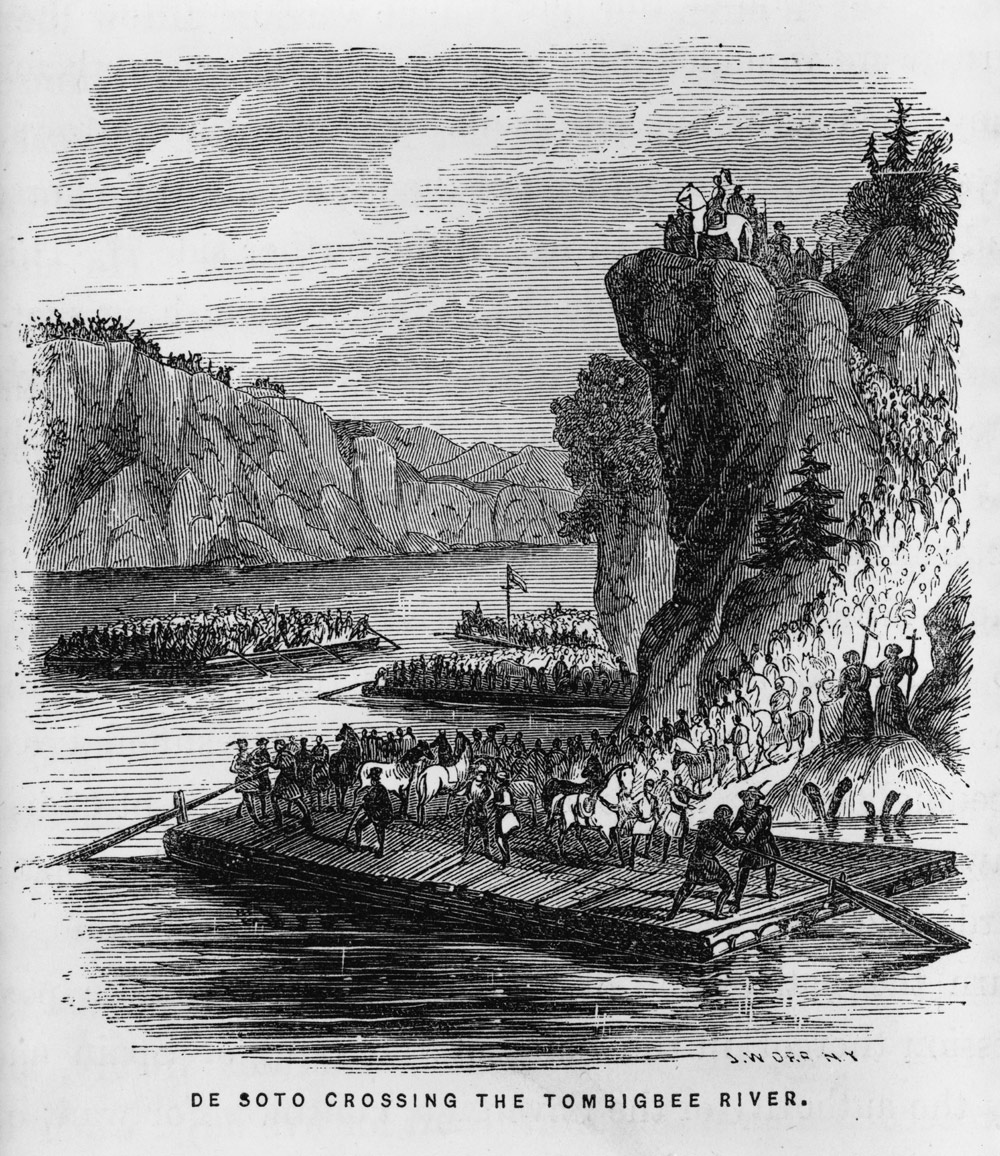
Maize draws our most direct connection to the South’s antiquity because Selu’s blood became the staff of life for the enslaved society that eventually shoved most of the South’s first people out of their homelands, often in chains or at the barrel ends of guns, and remains with us still as the single-most-important cog in the modern processed food industry. To cite one case, a Chicken McNugget contains thirty-eight ingredients, thirteen of which derive from maize. Including the chicken. In fact, maize leaves a unique carbon footprint, and when processed foods are subjected to mass spectrometry analysis it is possible to expose them for what they really are: rearrangements of maize molecules to disguise dietary monotony and poor nutrition as variety and healthful choice. A McDonald’s milkshake is 78 percent maize. A cheeseburger, 52 percent. A McNugget, 56 percent. If you have a Coke you are really drinking maize with your maize because Coke, except for the water, flavorings, and caffeine, is 100 percent maize. Indeed, when Coke and Pepsi switched from cane sugar to high fructose corn syrup in the early 1980s they launched the revolution that saw the birth of the Big Gulp, supersizing, and an epidemic of obesity that has recreated Americans as, in the words of one biologist, corn chips with legs.10 Maize enables the societies that adopt it to take transformative leaps. For both the Ancient South and the Modern South that meant larger, if less healthy, societies.
The processed food industry is premised on repackaging cheap maize as more costly value-added foods that have little to no relationship to place or time or culture unless microwaves, drive-thrus, and the disappearance of the family meal count as cultural cornerstones. Such foods, the story goes, free us from nature and put us into the future, into a utopia, a land and life beyond time and dependency and implication.11 But if we trail the idea of nature through the food history of the South we find that freeing ourselves from nature boils down to denying that the first people ever existed. Indeed, in the hands of historians maize often seems to be nothing more than an unmediated gift of nature to the first starving invaders. When, for example, one of the first environmental historians of the South posited that the climate of North America, not the first people, provided colonists with maize, he denied the vital knowledge, practice, and beliefs that first people had used for centuries to create the environment into which the invaders stumbled and, after looking around, lauded as a paradise on earth. Another important historian of American culture refused to concede any contribution to our foundational regional cultures by the continent’s first peoples, likening the presence of corn meal in bread or pumpkins in soup to the impact of environmental conditions rather than to the influence of the first people. When he characterized the replacement of oatmeal by grits on the invaders’ breakfast tables as just a change in mush, he obliterated not just a people but also our past.12
If, however, we take another historian’s contention that “everything derives from food production,” then the switch from wheat porridge to maize grits was important. As was the switch from cane sugar to maize sugar. As too was the replacement of grazing for beef cattle by their force-feeding with maize, which requires injections of antibiotics and steroids to keep the cattle alive long enough to slaughter at a profit because feeding them on maize rather than on grass eventually kills them—only without the medicine it just kills them a few months too soon to be profitable. All told, each American eats less than a bushel of maize per year in its proper form, but we consume about one ton per year in the form of beef, chicken, pork, preservatives, thickeners, leveners, sugars, and so forth. And such consumption comes with terrible costs to the earth, never mind us. It takes fifty gallons of oil to manufacture one acre of industrial maize, and right now there are more than eighty million acres under cultivation in the United States. To produce just one calorie of maize takes just more than one calorie of oil. And to produce one calorie of processed food requires about ten calories of oil. Cars aside, the debate about fuel efficiency and energy dependency starts with our dependence on maize.13
Suppose every time you hear oil mentioned as the bottom line in American foreign policy you see the demand for oil tracking back to the needs of maize and remember that maize is a needy servant. And then suppose you know as well that the great southern societies rose and fell in part because of the speed with which maize burns out land and asks for more. Think too of those porotic skulls, wounded bones, and carious teeth. Today’s children, the full-blown products of the supersized revolution, may well turn out to be the first generation of North Americans whose life expectancies will be shorter than those of their parents. Only they will not be the first because other people have already been through all of this before. We just tend not to allow their existence and experience to inform ours. The problem is now as it was then—that our diets are based overwhelmingly on maize—only now the processed food industry has transmogrified Selu’s gift into items that are not so much actual food but rather edible industrial products. And if you’d like fries with that, at McDonald’s they’re 23 percent corn.14
Katrina’s story offers something more fleeting than maize but also perhaps more integral to who we are. It is about the impassive refusal that gives our colonial cornerstones such heft. Yet as clear as can be, anyone who denies something ensures through the denying that that thing that is being denied will stay in place so long as it, the denial, keeps it, the thing, alive.

Hurricane Katrina was, by any account, a disaster. When the surge of water and wind hit the Gulf Coast in August 2005 it ruined one hundred billion dollars’ worth of property, flattened three hundred thousand homes, displaced hundreds of thousands, if not millions, of people, and took the lives of somewhere around two thousand people who died deaths they would have never known had they not been in that place at that time. A number of people have assigned blame for the destruction to America’s legacy of racial oppression and class exploitation. The logic goes that because New Orleans was both black and poor, it bore, in the arithmetic of misery, a double burden. There is a lot of truth to such a contention, but, again, remember we are interested here and now in slow-motion history, not the kind of history that barely reaches past our own thumbs.
It is like looking out a car window where the trees and bushes and sky you drive past when you look straight out blend into streaming bands of green and blue and it makes your eyes hurt to try to hold on to one passing branch or leaf before the entire scene is pulled from view but if you just change the angle of your glance downward a little the same details that were obscured by your speed slow down and are there to be seen clearly for a moment or two—even flowers, old cans, and fast-food wrappers, and the white line and the gravel too, before they are all left behind. Of course race and class informed what happened before, during, and after Hurricane Katrina but, at the same time, they are tertiary or quaternary to the original decision that we know today as New Orleans.15
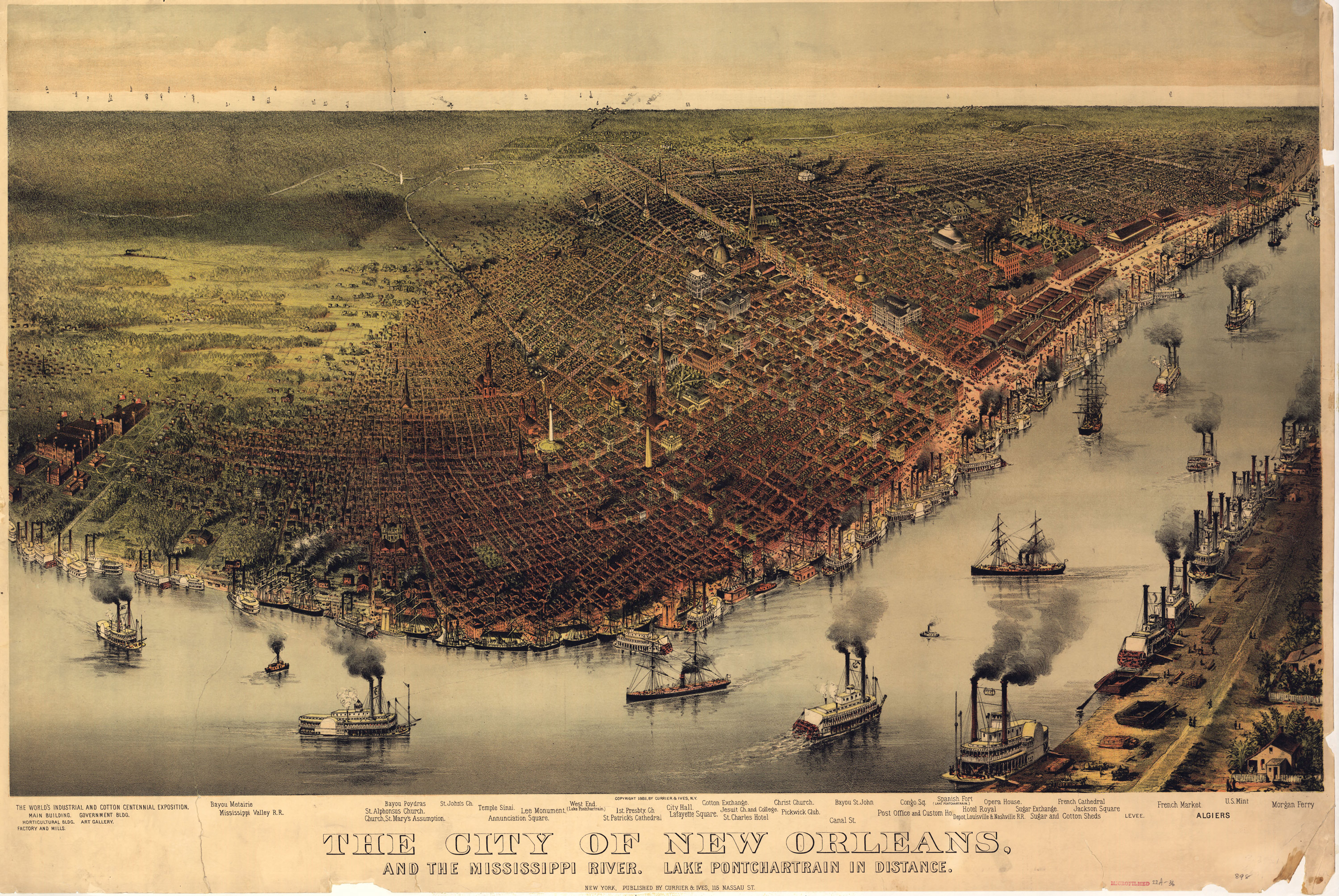
In the aftermath of the flood 80 percent of New Orleans sat under twenty feet of water. Critics of the event agree that the disaster was not natural, that is was man-made, and if that is true then let’s see if we can find out who that man was, because it was a man—one of those men who pops up constantly in the annals of colonization; men armed with a thousand schemes but often little-to-no sound sense. Furious men whose horoscopes took them from their homes to leap into oblivion and who upon arriving chose to enact their own desperation in works of mortar and stone, gunpowder and blood, all at the cost of refusing an inheritance that the first people were willing to share so long as these men could be respectful. But they could not. They chose not to because they were who they were because they were unsatisfied with their birthrights, maybe even unhappy to have been born, and anyone in that state of mind is incapable of understanding that sometimes a man needs to be humble in the face of things he cannot understand.
In 1721 a military engineer named Adrien de Pauger drafted the plaza and street grid design that served as the blueprint for New Orleans. He situated the city on the first hump of land north of the mouth of the Mississippi on which dwellings could be erected and which had served as a portage for millennia for people seeking to travel between the river and what we know today as Lake Pontchartrain. In Pauger’s time there was a small Quinipissa village at the portage, near where the French Quarter stands today, but it must also be added that no one lived there permanently for reasons that ought to be obvious by now because twenty feet of water overhead is a lot of water.16
There is a geographer who has argued that New Orleans was an “inevitable city” because the site dictated the city’s existence given the imperial geopolitical considerations that operated at the time. Here, however, I have to take up the humanist’s cudgel to fight that word “inevitable” wherever it appears because what that word does is absolve us from decisions we have made and instead shifts the burden of responsibility for events good and bad onto Providence’s broad shoulders. Maybe that’s why we have gods, because we can’t face ourselves and our own implications. At any rate, New Orleans was not fated for anything. It was drawn on a sheet of paper and then free people forced enslaved people to build it, and then in spite of flood after flood after flood, with the odd fire and epidemic thrown in, the colonial founders refused to concede Pauger’s mistake, and we inherited a long, futile, drawn-out morality play in which we fight one of the most powerful things on earth, water, in order to play our part in insisting to the cosmos that Pauger had not made a mistake.17
The problem is that he made two mistakes, one technical and the other moral. The first involved the massive network of levees and ditches that the invaders forced enslaved Africans to build, so that by 1732 the earthworks stretched thirty miles above the city and twelve below. The man-made system ended the seasonal floods and squeezed the sprawling waters into narrower and narrower channels such that the river became a roiling brown jet that gnawed at the levees’ knees until they buckled, leaving the invaders to wage a never-ending battle to build more and more walls to contain more and swifter water. Today the Army Corps of Engineers does what those enslaved people did long ago with newer, stronger, and maybe better techniques that will all probably fail anyway. Because they always have. No. Not always. Just going back to when people decided to shrug off the lessons of the land and to live there in what we today call permanence. We also cannot discount that the levees created then and create now more land to be drained and planted and developed, which exacerbates deforestation and the loss of the land’s ability to absorb water while interruptions to the flow of silt have further clogged the river’s lifeblood. The landscape is no longer capable of renewing itself because three hundred years of human digging have all but stopped eons of geological flow, leaving the wetlands to shrink at a speed that can almost be observed from a window on the space station.18
None of this is new because it has been going on ever since Pauger sat down to plot his plan. Except that it is new if we can become willing to accept a different measure of meaningful time, because the environmental cycle that constitutes New Orleans’s destiny has only been going on for a little less than three hundred years. People occupied dwellings at the site, remember, for a few thousand years, and the piles of oyster shells that generations of the first occupants had left behind there, which in turn captured wind-blown soil, which in turn provided a place for oak trees to grow on, which in turn provided more habitable land for more people, made the place an attractive site for settlement. Just not year-round settlement. Because year-round permanent settlement there was almost impossible. And still is in many basic ways. Pauger’s first task, and I imagine it to be any colonizer’s first step, was to create permanence in a place where one can truly be said to not belong. In this place and in that time asserting permanence meant replacing the first-people kind of permanence, which had been established over millennia, a kind of permanence that did not require an around-the-clock-occupation of the site, with a plan for a plaza and street grid—what one scholar has called “a blueprint of distress”—and an abiding sense of impermanence and alienation.19
Katrina, was, in a fundamental way, a disaster because of our collective need to reproduce the colonialism that has made our lives possible, to keep alive Adrien de Pauger’s insistence that water could be beat. But it was more than that, because such an insistence rested further on another insistence—that first people were savage and ignorant and, because so, had to be denied. That is the core of the decision Pauger and the imperial apparatus he embodied made—to refute the first people’s humanity by building a city where no city should have been, to rebuke them and their experience and knowledge, their faces and their hands, which is why New Orleans is where it is. And we play our part in this today when we call for improved levees or better disaster relief procedures to ameliorate those people’s ravaged lives. Such calls make sense in the context of today, but at their most extreme and unseen end are only the latest iteration of Pauger’s mistake, a collective repudiation of the ancient past because we won’t allow that past to be a part of us, preferring instead that it go away into the oblivion of the founding of the New World so that our time in the South can begin with us.
Such acts of erasure always require something to stand in place of the thing that is gone, and for us today race is probably the most important such placeholder, not just because it justified the oblivion of the New World but because it remains today, keeping us colonial because with it we use fear to hold in place an impossible world, the intractable and implacable fear that sustained colonization then and that we now just bear because that’s all we’ve ever done. And I can’t even ask rhetorically at what cost, because we all know, don’t we? 20
But what if you don’t want to call anyone black, white, or Indian anymore because it makes you feel small?
It is hard when you’re a historian because the writing of the history of the South is prefigured on the existence of races. Scholarship about the ancient South is full of terms like “Paleo-Indian” and “Archaic Indian,” allowing the bones of Columbus to sail a ghost ship to times and places he could have never found or known and to plant a flag or a cross on some beach in heaven to say that those people who are already there are not people but indios. Southern historians do something similar, crashing through time to call people names that have replaced more embarrassing ones but nonetheless keep intact the colonial project of gradating humanity according to the criteria that underwrote the horrific violence that made our lives possible.21
Anyone calling President Obama America’s first black president then has to accept that there is such a thing as a black. That races exist. Which is another way of refusing other possibilities, of allowing that there is nothing beyond black or white or Indian. They are fundamental. Immune to qualification. Indivisible. Here lies the last stubborn limit of the Columbian shadow that has so eclipsed our ability to invoke the South’s antiquity—our inability, because of the great navigator’s bequest and our choice to inherit it and to leave other ways of living, ways that can stand on common humanity rather than on skin color, unspoken and not undreamed but unenacted. None of us is pure. Who are we to say where we stop and where we begin? Our family trees all draw nourishment from different gardens, but we fight our own mixing with blunt instruments like black, white, and Indian because we need something to cling to, limpetlike, to convince us that the next tide won’t be our last.22 At some point, though, the next tide is the last and fear is no way to live. Fear takes too much work, like New Orleans’s refusal of those people who knew better than to live underwater, but in spite of it all the city had to persist there because civilization can only stand in the face of savagery, and if the cost of that stand is mindless and endless, so be it.

So Shreve asks:
“Do you want to know what I think?”
“No,” Quentin said.
“Then I’ll tell you. I think that in time the Jim Bonds are going to conquer the western hemisphere. Of course it wont be quite in our time and of course as they spread toward the poles they will bleach out again like the rabbits and the birds do, so they wont show up so sharp against the snow. But it will still be Jim Bond; and so in a few thousand years, I who regard you will also have sprung from the loins of African kings.”23
Is Jim Bond Barack Obama? And did Shreve, or, rather, Faulkner, have his finger on the tremulous thread of fate when he predicted the rise of a new people here in the Americas? Where Shreve saw their genesis spread out over a long future that none of us will live to see, I see it as also embedded in the hard materials of our past that we can see if we could be willing to look. We just have to be capable of imagining it before we can look for it. And we can find it in the South’s antiquity if we will only allow ourselves.
When we hold the so-called first black president up to our ancient past he becomes only a person, because no single name that we can contrive to call another man or woman can cross that great gulf of time that our antiquity offers except for just person. There was no Indian before Columbus, no such thing as a black before Europeans invaded Africa, and no such thing as a white before the European saw in the existence of the man he called black the challenge to his own self and he decided to call himself white. None of them is durable if we can be big enough to admit that we have no right to name each other anything but what we all are and always have been: human.
Time today is weirdly truncated even though there is often too much of it to go around. Digital speed harries us at all turns and mosquito clouds of screens and pushbuttons force us to frenzy, or they enhance our lives and productivity depending on one’s point of view. Nonetheless, the stream of time in which we stand here today has been, at the same time, flowing with human energy for thousands and thousands of years. What does it mean to stop thinking of oneself as a white person whose roots reach back maybe two hundred years to Ulster plantation? To stop thinking of oneself as a black whose family tree was felled by the violence of slavery and the trade in human beings that nourished it? To think of oneself as an Indian when it was Christopher Columbus who gave us that westering word?
Carrying such identities takes thousands of those small harmless steps that when added up over time amounts to the sum needed to reproduce colonialism each and every day. But to see such tiny steps for what they are lets us see their predicate as well, that refutation of the millennia that preceded colonialism’s moment but that is here all around us in supersized Cokes and in McNuggets, in the fool stand New Orleans took against water, and in the calling of President Obama black. But we won’t actually see these things for what they are so long as we choose the cover of five hundred years of after Columbus as opposed to the fifteen thousand years before him simply because Columbus told us that we could have nothing in common with those people who had been here all along because they were idle, unchristian, and naked. Small grounds for an indictment whose writ has lasted half of a millennia, warranted the deaths and displacement and confinement of millions of people, and shows no signs of expiring. But please do consider if only for a moment the possibility of thinking of yourself as someone who belongs, rightly or wrongly, to a human occupation of this place, the South, that reaches back not to a misguided voyage by a sailor from Genoa but back to the beginning when the world was formed on a turtle’s back and when Selu’s blood brought forth maize. What are the implications of accepting such a genealogy as one’s own? What are the implications of refusing it?
Measuring our lives against eons, stretching them over an eternity that can see mountains dissolve and oceans disappear renders us unto dust. Fighting what can’t be fought, just like fighting fear, takes too much out of us, and so we are left to face our eternity inextricably and anonymously with few tools at hand because few believe such a thing as eternity even exists anymore. Yet at the same time something has to be enduring to give us a reason to look up, to hold our eyes higher, and to engage the one thing that can grant us that impossible immortality . . . our soul. Not the black one or the white one or the Indian one, spirits born of the pain of our worst, but the one born of us all as humans that endows us with the compassion, the sacrifice, the hope, the courage, and the love that can lift us through the days and millennia to come.24 The ground is going to get us all in the end anyway so why not hope?
Sitting here now and writing I can hold and turn over in my hand almost as a thing that call I got on that bright winter day so many years ago to tell about the South. And I can set it down now too because I have told about the South, why people lived there, and why we ought to live at all. I can leave Quentin Compson and Shreve to their conversation in the dark and close the door on that imaginary iron-cold Harvard dorm room because, like all days, even this one that dawned twenty-something years ago and is only now drifting towards twilight has come to an end. But this day won’t be the last either. Tomorrow will bring a new one until it no longer can. And I’ll be no limpet clinging to a rock. I’m not afraid. I will keep telling. I’m a historian.


